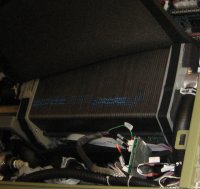 The development of technology occurs due to need and innovation. The development of technology occurs due to need and innovation.
There are several technologies relevant to sustainable energy systems that are being developed both in Australia and internationally.
Some of those are outlined below.
Fuel Cells
Fuel cells are now available in some niche markets, but their widespread use is still yet to occur. Fuel cells form an important part of the hydrogen cycle, which could become a useful energy storage medium in renewable energy power systems.
Further information about fuel cells can be found on our energy storage page.
Flow Batteries
Both the Vanadium Redox and the Zinc Bromine battery technologies have shown good development in terms of energy storage costs. The cost of these technologies when mass manufactured in a size that could be used with small to medium power systems is believed to be less than lead-acid batteries. Their largest drawback, a low energy density, is less of an issue in stand-alone power systems (than in mobile applications) and hence they are well suited to that application. Flow batteries are yet to hit the market in large quantities and hence they are yet to reach their projected pricing, but offer a good solution once they mature. Further information about flow batteries can be found on our energy storage page.
Flywheels
The use of flywheels in stand-alone power systems is still quite rare. Flywheels offer a great benefit to systems that have large, frequent, short-term power variations such as wind power systems. A good example of the successful use of flywheels is at the Diesel/wind/flywheel system in Denham in Western Australia. Further information about flywheels can be found on our energy storage page.
Compressed Air Energy Storage
Compressed Air Energy Storage (CAES) boasts zero standby losses and the fact that energy capacity is not intrinsically linked to power output capacity. These factors make it attractive to stand-alone power systems. Its largest drawback however is the requirement for large storage tanks or naturally occurring airtight underground caverns for any significant energy storage. It is this drawback that has led CAES to be used rarely. One interesting proposal from Iowa in the USA combines wind power with a CAES storage facility. Further information about compressed air storage can be found on our energy storage page.
Photovoltaic Concentrator System using Heliostats
While heliostats (devices that track the sun) have been used in thermal applications (furnaces & solar thermal systems), the use of photovoltaics at the focus is a relatively new application. An array of concentrating PV heliostats has been proposed by an Australian company, Solar Systems Pty Ltd, to form a 154MW solar power station in Victoria, Australia. Due to the ultra-high efficiency solar cells used and the scale of the project, this project has the potential to achieve the lowest cost solar PV electricity generation in Australia. This technology is due to be demonstrated by 2010.
High Efficiency Hydrogen Production using Photovoltaic Concentrators
Even using the highest efficiency solar cells, photovoltaic concentrating power systems produce a lot of heat that is usually wasted. An Australian company, Solar Systems Pty Ltd, is developing a PV concentrating system that uses the electricity produced to power an electrolyser and hence produce hydrogen from water. But the system has one major difference to most other PV-electrolysis systems. The heat rejected by the PV cells is being used to raise the water temperature, which increases the efficiency of the electrolysis process. This helps address a major criticism of the hydrogen energy storage cycle by improving the overall hydrogen production efficiency. This technology is believed to be still some time away from being commercial however.
|
|

